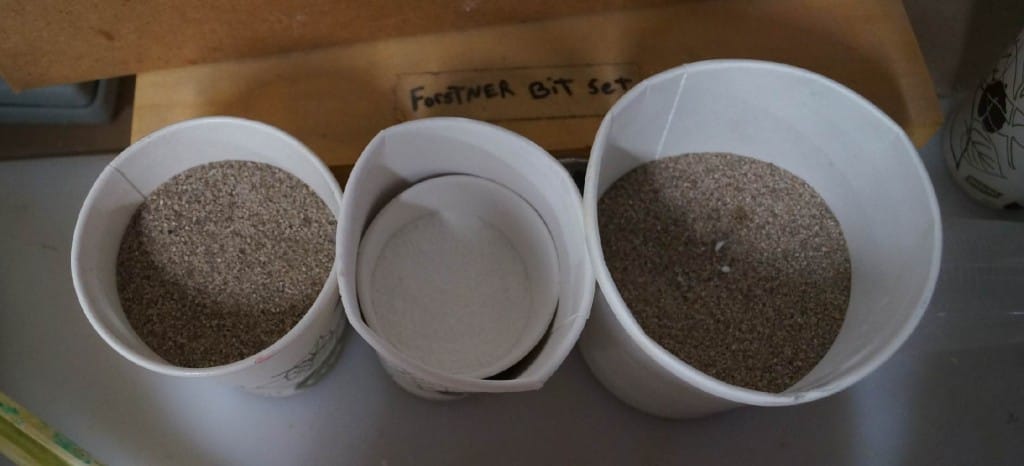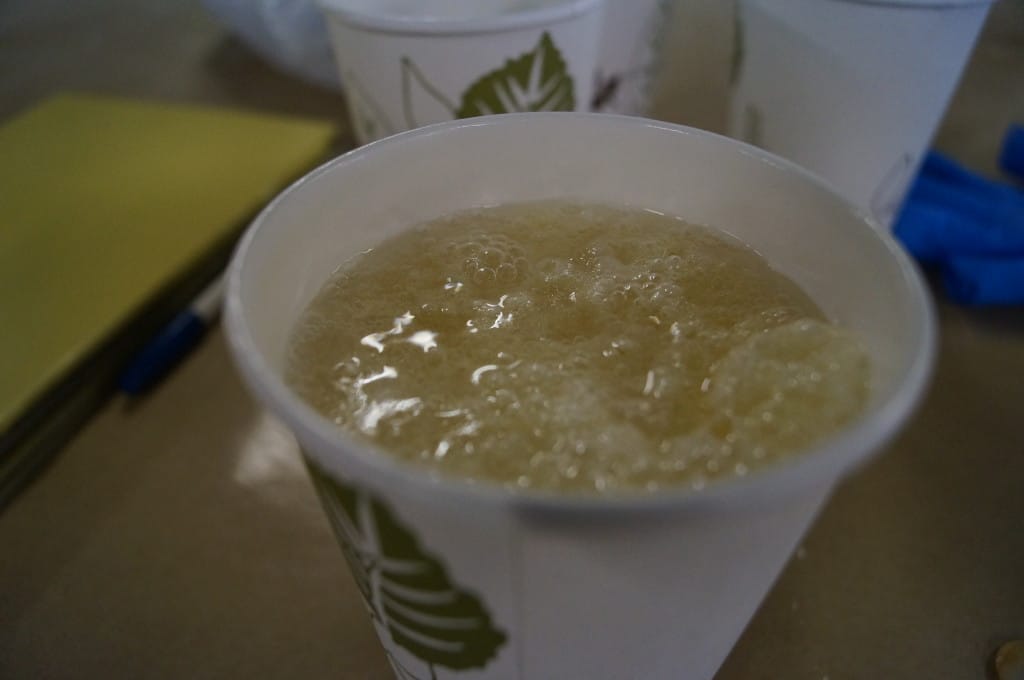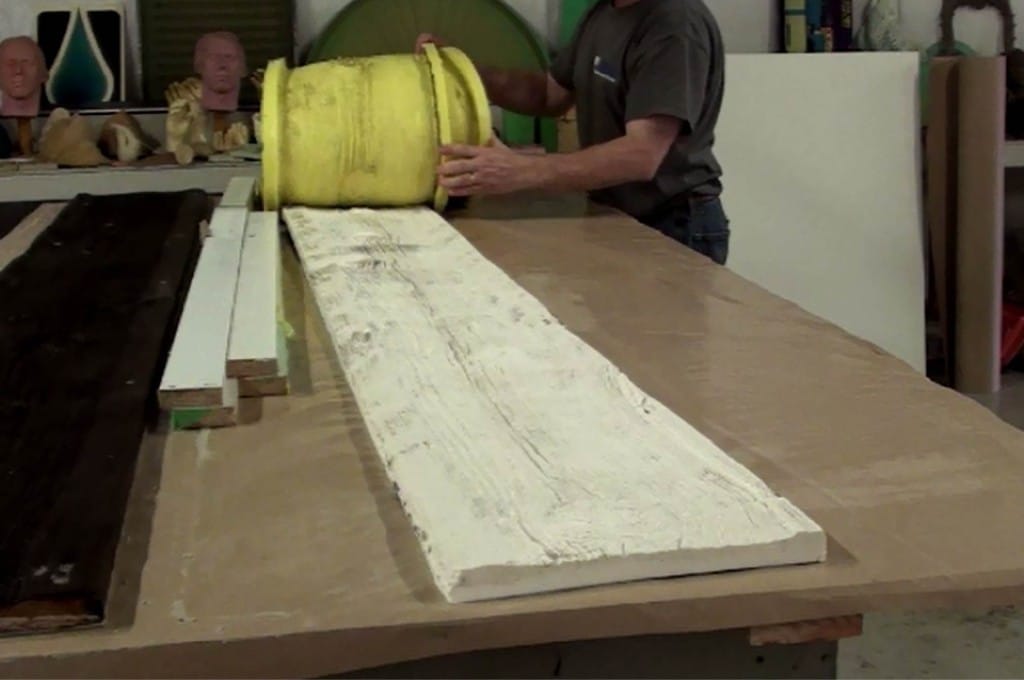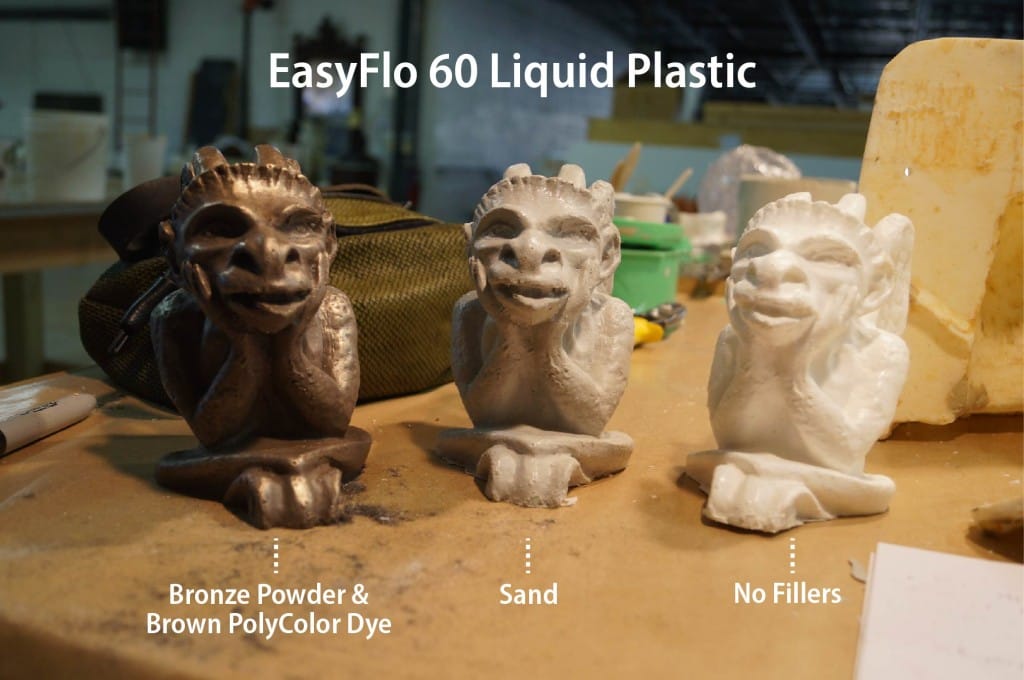Adding Fillers to Polyurethane Casting Resin
There are a few common reasons that fillers are added to polyurethane casting resins (e.g., EasyFlo Series Liquid Plastics, Poly 15-Series Liquid Plastics):
- to reduce cost
- to help dissipate exotherm (exotherm can cause shrinkage in castings)
- to achieve a different look or weight
NOTE: Other additives, like thickeners (Cabosil & PolyFiber II are dry fillers), softeners, retarders, and color dyes are often added to liquid plastics, but these types of additives will not be covered in this article. Only dry fillers, used for the purposes above, will be discussed.

Things to Consider Before Adding Fillers
Moisture Sensitivity
Liquid polyurethane plastics are moisture sensitive, so it is important to only add dry fillers to these resins. Even some fillers that appear dry (e.g., wood powder, nut shell flours) may contain moisture and cause foaming of the plastic, so ensure that fillers are completely dry before using (baking may be necessary).

[an example of foaming that can occur when water is introduced to EasyFlo 60 casting resin]
Change in Viscosity
Large amounts of filler can affect the flow characteristics of resin, so make sure to experiment before attempting a large project. Adding too much filler can increase viscosity which may result in air entrapment and bubbles in the finished casting.
Sinking & Floating
Heavy fillers tend to sink in resin and light fillers tend to float; therefore, it’s very important to mix the combination thoroughly before casting. Also, a fast-setting resin is generally a better option as it will begin to cure before fillers have the chance to settle or float to one side. A popular option is EasyFlo 60 Liquid Plastic, which has a 2 to 2.5-minute working time and a 15-30-minute demold time.
Weight & Appearance of Fillers
Fillers are often added to change the look or feel of a casting (see the “Adding Fillers to Change Look or Weight of Castings” section); however, it’s important to consider these physical changes when selecting a filler for other purposes, like cost reduction and to dissipate exotherm. For instance, heavy fillers absorb more exothermic heat, but they result in heavy castings, which may not be appropriate for the application at hand. Also consider that the color of the filler may affect the color of the finished casting.
Neutral-Density Option
For a neutral-density filler that will not affect the density of the casting, consider PolyFil ND. This filler can be used to reduce the cost of castings as well as dissipate exotherm.

Adding Fillers to Reduce Cost
Adding an equal volume of low-cost filler to a Polytek liquid plastic can potentially cut the cost of the casting in half.
Popular fillers for reducing cost are dry sand and limestone. As a reminder, these fillers will affect the viscosity of the casting resins.
Typical costs per cubic inch of these fillers are shown below, along with a few other fillers:
| Filler | $/lb | Density (g/cc) | $/in³ | Typical Use |
| Dry Sand | 0.05 | 2.7 | 0.01 | Reduce Cost |
| Ground Limestone | 0.15 | 2.7 | 0.01 | Reduce Cost |
| Extendospheres CG | 0.50 | 0.7 | 0.01 | Make Lightweight Castings |
| Q-Cel 6014 or 3M K1 | 6.00 | 0.1 | 0.02 | Make Lightweight Castings |
| Bronze Powder | 15.00 | 8.8 | 4.79 | Make Cold Cast Bronze Parts |
Adding Fillers to Dissipate Exotherm
Exotherm is the heat of the reaction produced as the resin cures. In large castings, it can sometimes cause thermal shrinkage or distortion.

[shrinkage can occur in large castings, such as this EasyFlo 60 casting of a long, wood panel]
In our experience, Alumina Trihydrate performs well as a filler to disperse exothermic reaction and reduce shrinkage. Calcium carbonate and PolyFil ND are other options, but do not perform as well as Alumina Trihydrate.
Adding Fillers to Change the Look or Weight of Castings
Fillers are often added to resin to achieve a certain look or feel. For instance, bronze powder and other metal powders are used to create castings with a metal-like finish. In this example, castings are removed from the mold and then burnished with steel wool to expose the metal particles [see a cold cast bronze tutorial here]. Not only does the appearance change, but the weight increases.
The photo below features three EasyFlo 60 plastic castings with varying fillers. EasyFlo 60 naturally cures to a white color [the figurine on the right does not have any fillers]:
[left: Bronze Powder & Brown PolyColor Dye | center: Sand | right: No Fillers]

Other dry fillers that are often used to create a distinct look include marble dust and glitter, which are more often featured in clear casting resins, like the Poly-Optic® 14-Series resins.
When added at the proper ratio, Extendospheres CG, Q-Cel 6014 or 3M K1 can make castings float or carve more
easily.
Dry fillers can be a useful addition to resin for many reasons, but not all
fillers will perform well. If you have questions about adding fillers to Polytek polyurethane casting
resins, please get in touch with us: